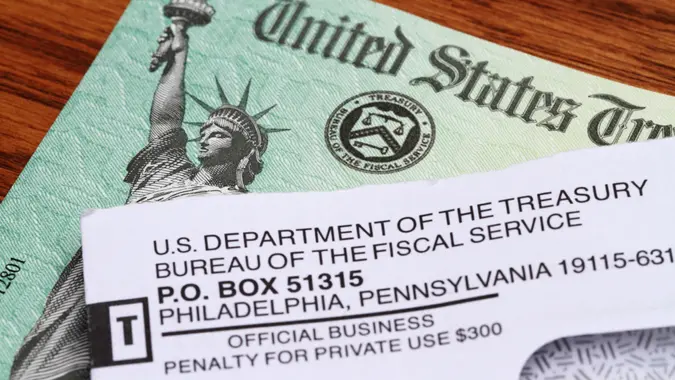3 Common Money Myths That Are Holding You Back (And What To Do Now)

Commitment to Our Readers
GOBankingRates' editorial team is committed to bringing you unbiased reviews and information. We use data-driven methodologies to evaluate financial products and services - our reviews and ratings are not influenced by advertisers. You can read more about our editorial guidelines and our products and services review methodology.

20 Years
Helping You Live Richer

Reviewed
by Experts

Trusted by
Millions of Readers
According to a Pew Research Center survey, only about half of U.S. adults are confident in their knowledge of personal finance. The rest (46%) either know a little or hardly anything at all.
Financial literacy is key to ensuring you’re making smart money moves. Unfortunately, it’s all too easy to get caught up in misinformation — even if it comes from someone who means well.
Fidelity recently disclosed three common money myths that are holding people back financially, and how believing these myths can hurt your finances. Here are those myths and some beneficial money moves to counteract each one.
There’s No Reason To Save If You Can’t Save a Lot
According to Fidelity, some experts suggest saving at least 15% of your gross income from every paycheck, and starting in your early to mid-20s. But this isn’t always feasible. Not only do you have bills to pay, but even the best-laid plans don’t always work as intended. Sometimes, life gets in the way of your savings goals.
But you should still save. Even if it’s not 15% of your income, a little bit goes a long way.
Say you earn $50,000 a year and invest $5,000 (10%) in an account with an average 7% return rate. If you start at age 30 and keep consistently saving the same amount for the next 20 years, you’d have $224,326 in that account ($100,000 in contributions and $119,326 in interest).
And don’t let fear of time get in the way. While it’s good to start sooner in life, that doesn’t mean you should skip saving just because you’re in your 30s, 40s or beyond. Just know that the later you start, the more you’ll need to save to start catching up to the point you need to be.
Here are some ways to increase your savings:
- Pay off high-interest debts first so you have more to invest and save.
- Cut back on non-essentials (up to a point).
- Get a roommate to split the bills with.
- Start a side hustle for a few hundred bucks or so a month (and save the extra or pay down debt).
There’s No Such Thing as ‘Good’ Debt
You might have been taught to steer clear of debt, and for good reason. High interest rates and even higher balances can eat into your budget and savings like crazy.
But not all debt is bad.
Take a mortgage, for example. Assuming you get a low interest rate and can afford the monthly payments, you could use a mortgage loan to get a house — and a potentially appreciating asset. You can also deduct certain things, like interest payments, if you itemize. This can lower your overall tax bill or even result in a larger refund.
Be sure to compare rates, terms and fees from different lenders before taking on any kind of debt. Make sure the new loan payment fits into your budget and that what you’re getting in return is worth the cost (including interest or financing charges).
You Should Never Use Credit Cards
Even credit card debt, while it should be used responsibly, isn’t inherently bad. If you can pay off your full balance every month, you can avoid interest charges while taking advantage of:
- The ability to build credit
- Card perks and rewards (like cash back)
- Added security that debit cards don’t always offer (like fraud protection)
If your card earns cash back, you can put that toward your savings and investments. If it has travel perks, you can lower the cost of your trips while still enjoying them to the fullest.
And if your credit score is high enough, you may be eligible for a credit card with a low or 0% introductory APR. You can use that card to make a big-ticket purchase or potentially transfer the balance from another, high-interest card. As long as you pay off the balance during the intro period, you won’t be charged interest.
More From GOBankingRates
 Written by
Written by  Edited by
Edited by 

























